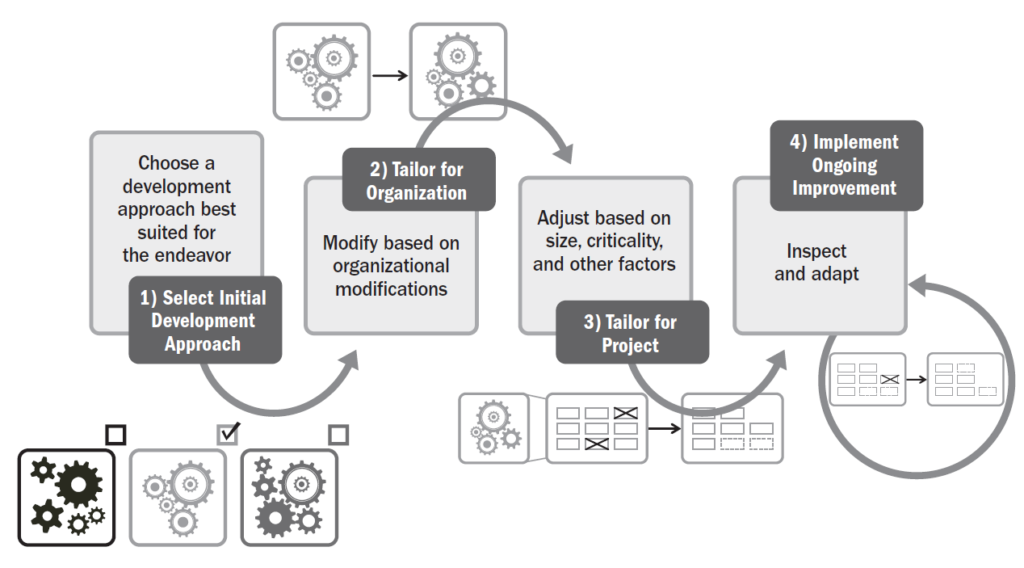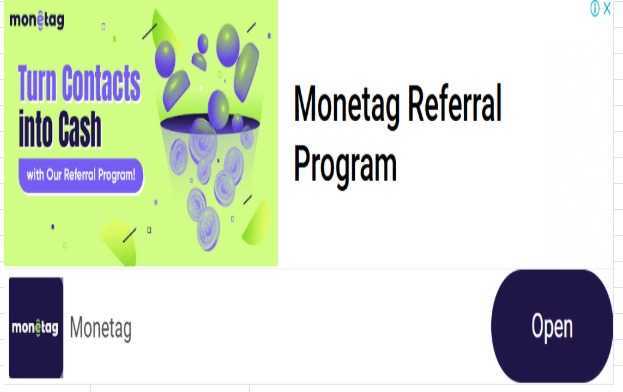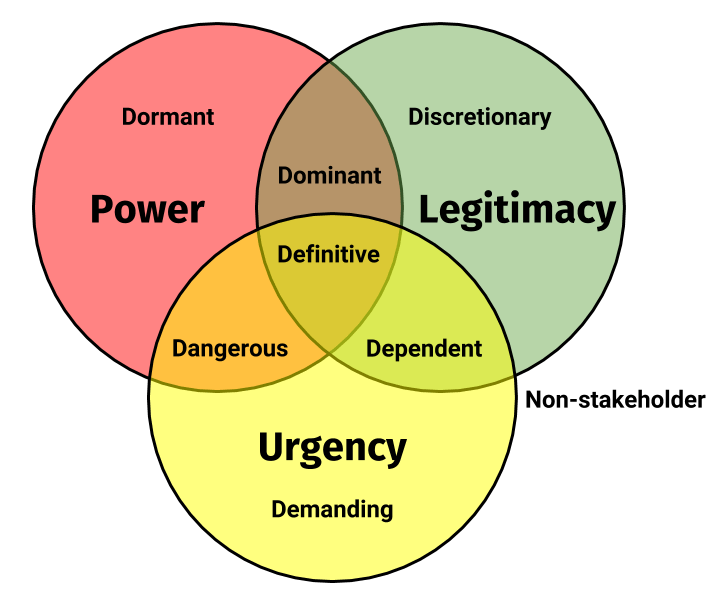Understanding the Salience Model in Project Management
Excerpt
The Salience Model is a vital stakeholder analysis tool introduced in project management to prioritize stakeholders based on their power, legitimacy, and urgency. Adopted in the PMI PMBOK Guide, this model provides project managers a dynamic method to understand stakeholder influence, improve communication strategies, and ensure successful stakeholder engagement. This blog explores the Salience Model in detail, including its origin, dimensions, stakeholder types, benefits, challenges, and practical application within the context of modern project environments.
Introduction
Stakeholders play a pivotal role in project success. From sponsors and clients to users and community representatives, understanding and managing stakeholder expectations is a foundational responsibility for every project manager. The PMBOK (Project Management Body of Knowledge) emphasizes stakeholder engagement through strategic identification, analysis, and management. One of the most insightful models endorsed within this framework is the Salience Model, developed by Mitchell, Agle, and Wood (1997).
The Salience Model provides a structured approach to identify and prioritize stakeholders based on power, legitimacy, and urgency. By categorizing stakeholders according to these attributes, project managers can tailor engagement strategies, allocate communication efforts effectively, and manage potential risks related to stakeholder dissatisfaction.
1. Origin and Background of the Salience Model
The Salience Model was proposed in the context of organizational management and later adopted for project management. Mitchell, Agle, and Wood introduced the model to address a critical question: Who and what really counts in stakeholder management?
Their research identified that not all stakeholders have the same influence or interest, and therefore, it is not efficient or effective to treat them all equally. The Salience Model emerged to provide a framework for assessing the relative importance—or salience—of various stakeholders in a project.
2. Key Attributes of the Salience Model
The Salience Model identifies three key attributes that determine stakeholder importance:
a. Power
Power refers to the stakeholder’s ability to influence the project. This may stem from formal authority, control of resources, access to decision-makers, or social influence.
Types of power include:
- Coercive (threats or sanctions)
- Utilitarian (rewards or material incentives)
- Normative (symbolic or value-based influence)
b. Legitimacy
Legitimacy is the perceived validity or appropriateness of the stakeholder’s involvement in the project. A legitimate stakeholder has a recognized and accepted interest or role in the project’s outcomes.
c. Urgency
Urgency reflects the time-sensitivity and criticality of a stakeholder’s needs or claims. A stakeholder with high urgency expects prompt attention and resolution of their concerns.
These three attributes are not mutually exclusive. A stakeholder can possess one, two, or all three.
3. Stakeholder Typology in the Salience Model
The combination of the three attributes results in seven types of stakeholders:
Attribute(s) Possessed | Stakeholder Type | Description |
Power only | Dormant | Potentially influential but currently inactive. |
Legitimacy only | Discretionary | Deserve attention but lack influence or urgency. |
Urgency only | Demanding | Vocal but lack power and legitimacy. Often seen as nuisances. |
Power + Legitimacy | Dominant | Influential and appropriate. Require regular attention. |
Power + Urgency | Dangerous | May use forceful tactics to gain attention. |
Legitimacy + Urgency | Dependent | Need support from others to influence decisions. |
All three attributes | Definitive | Top priority. Must be actively managed and engaged. |
Understanding these stakeholder types helps project managers create targeted engagement strategies.
4. Application of the Salience Model in PMBOK
In PMBOK 7th Edition, the focus has shifted from process-based to principles-based project management. Stakeholder engagement remains a critical performance domain. The Salience Model supports the principle of stakeholder engagement by offering a tool for:
- Prioritizing stakeholder communication
- Allocating resources for stakeholder management
- Identifying potential risks from neglected stakeholders
- Ensuring project decisions reflect stakeholder expectations
Integration into Project Processes
The Salience Model is particularly useful during the Identify Stakeholders and Plan Stakeholder Engagement processes. It provides a robust alternative or complement to other tools like the Power/Interest Grid or Influence/Impact Matrix.
5. Benefits of Using the Salience Model
a. Enhanced Prioritization
By mapping stakeholders based on salience, project teams can prioritize engagement, reducing time wasted on low-impact individuals and focusing on those who matter most.
b. Improved Communication
Understanding urgency and legitimacy helps craft relevant messages, appropriate tone, and suitable frequency of communication.
c. Risk Mitigation
Stakeholders with high urgency or power can derail projects if neglected. Identifying these early helps mitigate threats and build supportive relationships.
d. Dynamic Adaptability
The model accommodates changing stakeholder behavior. As a project evolves, stakeholders may gain or lose attributes, and the model supports re-evaluation and strategy adjustment.
6. Practical Steps to Implement the Salience Model
Step 1: Identify Stakeholders
Use brainstorming, expert judgment, stakeholder registers, and historical information to list all stakeholders.
Step 2: Assess Attributes
Evaluate each stakeholder based on:
- Do they have power?
- Are their claims legitimate?
- Do they require urgent attention?
This can be done through interviews, organizational analysis, or surveys.
Step 3: Map the Stakeholders
Place stakeholders into one of the seven typologies. Create a visual chart to help the team understand the distribution.
Step 4: Define Engagement Strategies
Use the salience classification to define communication and engagement tactics:
- Definitive: Frequent updates, involve in decision-making.
- Dominant: Consult regularly, give visibility.
- Dangerous: Monitor closely, defuse tension.
- Discretionary: Acknowledge, occasional updates.
Step 5: Review and Update
Stakeholder attributes can change. Re-assess salience at key project milestones or when organizational dynamics shift.
7. Comparing Salience Model with Other Stakeholder Tools
Model | Criteria Used | Key Strength |
Power/Interest Grid | Power, Interest | Simple and visual |
Influence/Impact Matrix | Influence, Impact | Helps identify critical influencers |
Salience Model | Power, Legitimacy, Urgency | Deep prioritization based on legitimacy |
The Salience Model stands out due to its depth in stakeholder legitimacy and time sensitivity, which is often overlooked in simpler models.
8. Challenges in Using the Salience Model
a. Subjectivity in Assessment
Determining legitimacy or urgency can be subjective. A stakeholder may perceive themselves as more legitimate or urgent than the project team does.
b. Dynamic Nature
Stakeholder attributes change. A dormant stakeholder may become definitive overnight due to organizational changes.
c. Overlooking Low-Salience Stakeholders
Discretionary or dependent stakeholders may seem unimportant but can become crucial due to external influences, e.g., social media or regulatory scrutiny.
d. Data Collection
Gathering accurate data on stakeholder attributes requires effort, openness, and organizational support.
9. Case Study: Salience Model in Action
Project: Urban Transportation System Upgrade
Stakeholders Identified:
- City Government (Power + Legitimacy)
- Local Residents (Legitimacy + Urgency)
- Environmental NGOs (Legitimacy only)
- Media (Urgency only)
- Construction Company (Power only)
- Transit Union (Power + Urgency)
- Regulatory Authority (Power + Legitimacy + Urgency)
Classification and Strategy:
- Regulatory Authority: Definitive – Engage continuously
- City Government: Dominant – Keep informed and consult
- Transit Union: Dangerous – Manage conflict, address concerns
- Local Residents: Dependent – Support through community liaisons
- Media: Demanding – Provide controlled public updates
- Environmental NGOs: Discretionary – Acknowledge and update
- Construction Company: Dormant – Involve when execution starts
The Salience Model enabled the project team to allocate attention and communication resources strategically, ultimately leading to smoother execution.
10. Tips for Effective Use of the Salience Model
- Use qualitative and quantitative data for assessments.
- Engage stakeholders in attribute self-assessment when appropriate.
- Regularly update stakeholder profiles.
- Combine the Salience Model with Power/Interest grid for visual insights.
- Don’t ignore low-salience stakeholders—monitor them passively.
11. Evolution of Stakeholder Thinking in PMBOK
The PMBOK Guide has evolved to emphasize value delivery and stakeholder co-creation. The Salience Model supports this evolution by ensuring meaningful stakeholder engagement and focusing on those whose contributions and cooperation are vital for delivering value.
12. Future of the Salience Model in Agile and Hybrid Projects
In Agile or Hybrid environments, stakeholder engagement is more continuous and iterative. The Salience Model remains useful for:
- Prioritizing Product Owner interactions
- Handling external stakeholder dynamics
- Managing stakeholders who influence sprint goals or funding
Its flexibility allows adaptation across project methodologies.
Conclusion
The Salience Model is a powerful stakeholder prioritization tool that helps project managers align their communication and engagement strategies with stakeholder influence, legitimacy, and urgency. Its application in the PMBOK framework underlines its relevance in modern project management.
By integrating the Salience Model into stakeholder analysis, project teams can ensure that influential voices are heard, potential conflicts are mitigated, and value is delivered in a way that meets stakeholder expectations. Though not without challenges, its depth and clarity make it an indispensable tool in the project manager’s toolkit.



